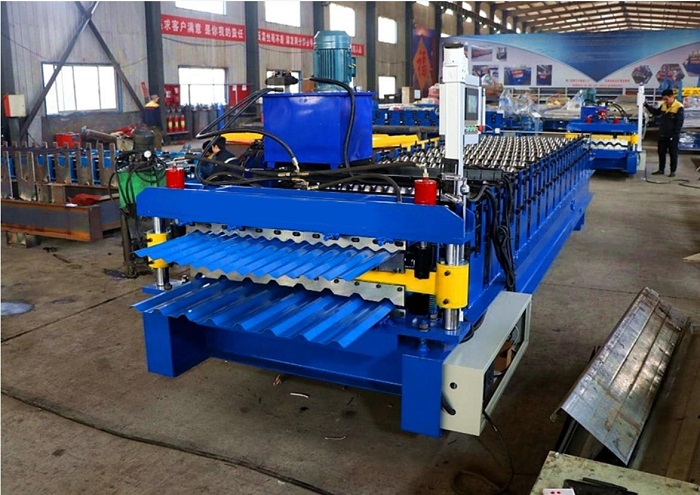roll forming steel factory
The Process and Innovation of Roll Forming Steel Factories
Roll forming is a manufacturing process that involves the continuous bending of a material, usually steel, into desired shapes through a series of successively arranged rollers. This technique has become a vital part of the steel industry, particularly in the construction and automotive sectors. The functioning of a roll forming steel factory is not only fascinating but also highlights the advancements in technology and engineering efficiency.
Understanding Roll Forming
At its core, roll forming involves feeding a strip of metal through a set of rollers, each designed to incrementally bend the metal into a specific profile. Unlike traditional methods, which often involve machining or welding, roll forming is highly efficient and produces minimal waste. The process begins with the preparation of the raw steel, which is usually in coil form. The coil is uncoiled, leveled, and then guided through the rollers, which shape it progressively into the intended profile.
The versatility of roll forming allows for the production of a wide range of products, from simple angle shapes to complex sections used in automotive frames and building components. Common applications include gutters, studs, tracks, and various structural elements. Due to the continuous nature of the process, roll forming is capable of significant output with high precision, making it a preferred choice for mass production.
Technological Advancements
In recent years, roll forming steel factories have embraced various technological innovations to enhance efficiency and product quality. Computer Numerical Control (CNC) systems are increasingly used in the set-up and operation of roll forming machines. This technology reduces human error and allows for rapid changeovers for different profiles, enabling manufacturers to adapt quickly to changing market demands.
Additionally, advancements in material science have led to the development of stronger and lighter steel grades, which in turn has allowed roll forming processes to create even more sophisticated structures. Factories now utilize high-strength low-alloy (HSLA) steels and advanced high-strength steels (AHSS) to improve durability while reducing weight, which is particularly crucial in the automotive sector for enhancing fuel efficiency.
roll forming steel factory

The Role of Quality Control
Quality control is paramount in roll forming processes to ensure that the finished products meet stringent industry standards. Factories employ a combination of real-time monitoring and rigorous testing protocols. Modern roll forming machines are equipped with sensors and software that provide instant feedback on parameters such as thickness, width, and profile accuracy. Any discrepancies can be detected immediately, allowing for quick adjustments to minimize defects.
Moreover, factories often conduct secondary tests, such as tensile testing and impact testing, to verify the material properties of the formed products. This level of quality assurance ensures that components not only fit precisely but also perform reliably in their intended applications.
Environmental Considerations
In today's manufacturing climate, sustainability is also a critical consideration for roll forming steel factories. The steel industry is notoriously resource-intensive. Therefore, many factories are implementing greener practices, such as recycling off-cuts and using energy-efficient machinery. By optimizing the use of resources and reducing waste, roll forming factories contribute to a more sustainable manufacturing ecosystem.
Additionally, the shift toward environmentally friendly practices doesn’t stop at the factory floor. Many manufacturers are exploring options for producing products that meet or exceed environmental regulations, which is becoming an increasingly important factor for customers, especially in construction and automotive sectors.
Conclusion
Roll forming steel factories stand at the forefront of manufacturing innovation, combining traditional techniques with modern technology to produce critical components for a variety of industries. As they continue to evolve, embracing advancements in technology and committing to sustainable practices, these factories are not only enhancing their productivity and quality but also paving the way for a more sustainable future. The roll forming process exemplifies the blend of efficiency and craftsmanship, marking it as a crucial player in the ongoing story of steel manufacturing. As the industry progresses, it will undoubtedly continue to adapt and thrive, meeting the ever-changing demands of the global market.
-
Roof Panel Machines: Buying Guide, Types, and PricingNewsJul.04, 2025
-
Purlin Machines: Types, Features, and Pricing GuideNewsJul.04, 2025
-
Metal Embossing Machines: Types, Applications, and Buying GuideNewsJul.04, 2025
-
Gutter Machines: Features, Types, and Cost BreakdownNewsJul.04, 2025
-
Cut to Length Line: Overview, Equipment, and Buying GuideNewsJul.04, 2025
-
Auto Stacker: Features, Applications, and Cost BreakdownNewsJul.04, 2025
-
Top Drywall Profile Machine Models for SaleNewsJun.05, 2025








